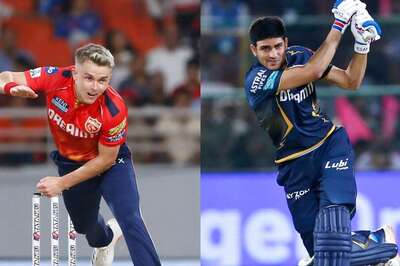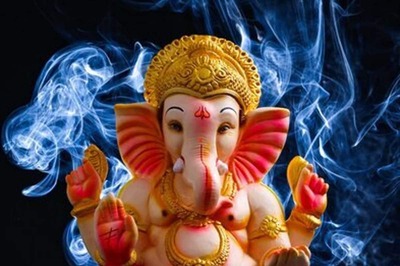
views
The Indian general elections are the greatest festival of democracy on earth with over 700 million voters electing their representatives to form a federal government.
As the economy slows - and it undoubtedly will even more in the next fiscal year than this one - it is not only who becomes prime minister that matters but also how he or she will govern the country in times of disappearing jobs, shrinking revenues and rising shrieks for government aid.
India has just completed a decade of two stable coalition governments, one led by the right-wing Bharatiya Janata Party and another by the centrist Congress. The Congress-led alliance is hoping to win a second consecutive term in office, something no one has managed except India’s first Prime Minister Jawaharlal Nehru and his daughter Indira Gandhi. The Left parties who, with 61 members in a House of 543, held the prop to the seat of power until July 2008 hamstrung the coalition for four years on crucial issues of reform.
With the manifestos of both the leading parties promising grain at less than market rates for the poor, reform hardly seems to be on their minds. The BJP has promised a tax bonanza if it comes to power and the Left has vowed to bring back shackling taxes. The Dalit-led Bahujan Samaj Party has promised year-round employment for those in need.
Though wholesale prices have fallen, food prices remain high, burdening low-income groups whose votes are critical in any polls. It is no surprise then that political parties’ immediate electoral concerns and responses are antithetical to economic prudence in spite of the presence of eminent economists among them.
More crucial is the fact that the single largest party in the House will have to find allies after the polls, a trend repeated since 1989, except when the Vajpayee-led BJP’s pre-poll alliance won a comfortable majority in 1999.
This year’s general elections will present a unique conflict of political pragmatism and hard economic realities. Three consecutive years of over 9 percent growth enriched the country enough for 18 state governments to come out of the red and the Union to bankroll ambitious welfare schemes and high farm product prices.
In Budget 2009, no matter who presents it, it will be clear that the party is over. As the manufacturing and services sectors slow down, tax revenues will shrink, significantly reducing the government’s ability to spend out of the recession as counterparts elsewhere in the world are trying to do. Nightmarish scenarios are naturally imaginable and past policy responses do not offer much confidence.
In 1989-90, goaded by Haryana strongman Devi Lal, the V.P. Singh government wrote off farm loans. Expansion of job reservations ignited widespread conflict between supporters and opponents.
The ruinous consequences of the two decisions for the society and economic discipline, however, did not deter Prime Minister Manmohan Singh to tread the same trail despite his training as an economist and experience as central banker.
Experience suggests that pressure on public policy from coalition partners is not new, but it will be very different if neither the Congress nor the BJP manages 140 seats in Parliament. It was hard enough for the Congress to deal with the Left who stayed out of the government. It will be harder to contain large regional parties who share power.
In a different scenario, a government dominated or led by a smaller party will be a short-lived one. Were a present or former chief minister to lead such an alliance propped up by a national party, the pressure to win popularity will be more, not less pressing.
Yet, there is less reason for panic than in 1989 or even 1996. All parties nursing bigger ambitions have held office at a state level, and some regional leaders have acquitted themselves well on more than one count. Raising revenues and wooing investment is not a novel idea for them, irrespective of their ideological hue.
Further, there is largely a measure of continuity in security and foreign policy. Even the Left is unlikely to undo the India-US nuclear deal, given it has expanded ties with Russia. No dominant party in Tamil Nadu actually supports the Tamil Tigers.
A coalition where the Left bloc plays a larger role is unlikely to be enthusiastic about closer ties with the US. Nobody also realistically expects the Marxists-led grouping to maintain its presence.
Some differences with Washington are inevitable and have little to do with the Left. With President Barack Obama indicating that he will re-submit the Nuclear Test Ban Treaty to Congress, Indian leaders are likely to close ranks. Any Indian prime minister will resist American pressure to deploy troops in Afghanistan; last considered during Vajpayee’s reign in 2003.
Any new government will continue to engage the US while preparing for things to get worse in Pakistan. There is room for differences in emphasis. An L.K. Advani-led ministry would make a new anti-terror law a political plank at home while pushing for more Indo-US cooperation abroad.
Still, at present, it is difficult to visualise a government of the sort India has had in the last decade. Regional parties (and this includes Mayawati’s BSP) may be rather bigger than smaller players both in power and policy making than in the recent past.
Were a state-level leader (there is no shortage of aspirants) to be PM even for a brief while, how far will it change things? A regionalist will tend in one direction and an aspiring national leader like Mayawati another way. The former will be inclined to help her or his home state, the latter will nurture her national constituency.
In political terms, it will be a wake-up call for the two large national parties. But in economic terms, it will probably strengthen certain trends already evident in the last two years of the Manmohan Singh period.
Simply put, long before the slow down in the rate of economic growth required a stimulus, the government was stepping up spending. This was especially so with the loan waiver of over 700 billion rupees, the largest in Indian history in the budget of 2008. The other major bill was for something far less defensible than a bail out for debt hit farmers: A larger pay package for government servants, without any change to bring more accountability.
Spending your way out of political debacle, and the Congress had its fair share in state level polls, is not new. But it is a precursor of what a government with a shorter shelf life may be tempted to do, and do on a larger scale.
The United Front government of 1996-98 may be a better test than other such coalition attempts. The then finance minister P. Chidambaram presented a ‘dream budget’ that quickly turned into a nightmare mainly because of the Asian currency crisis.
The last decade-and-half have seen regional players exercise power and administer vast regions. Some states, notably those in the south, have advanced sectors comparable to their counterparts elsewhere in the world. They also do manage large welfare schemes.
The prevailing wisdom is that governance is a casualty of coalitions. Economic common sense gives way to populism.
However, it is possible, even plausible, that there can be another outcome. Politics after all is the art of finding a balance. Given that larger parties will have to share power, it may well be the turn of the regionalists to attempt the tightrope walk.
Most crucially, they can reform and restructure India’s corrupt and rickety administrative structure which is a burden on the rich and poor alike. Far more than the present claimants to the top job from the two premier parties, they know the nitty gritty of ground level government.
The regional parties may not be a gift from heaven. However, to write them off may be a mistake. What they will push for, prudence or profligacy, slogans or effective changes, we will only know as the year wears on.
It matters less whether they will lead or remain partners. How India moves ahead will have a lot to do with how they pull their weight.
(Mahesh Rangarajan is professor of history at Delhi University and an independent political commentator.)




















Comments
0 comment